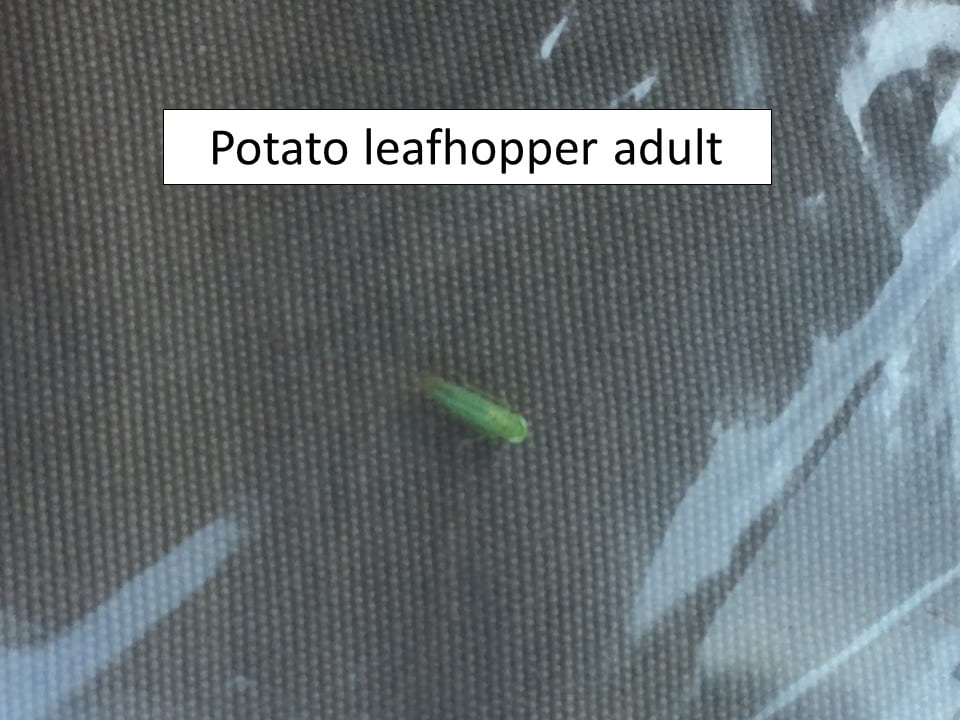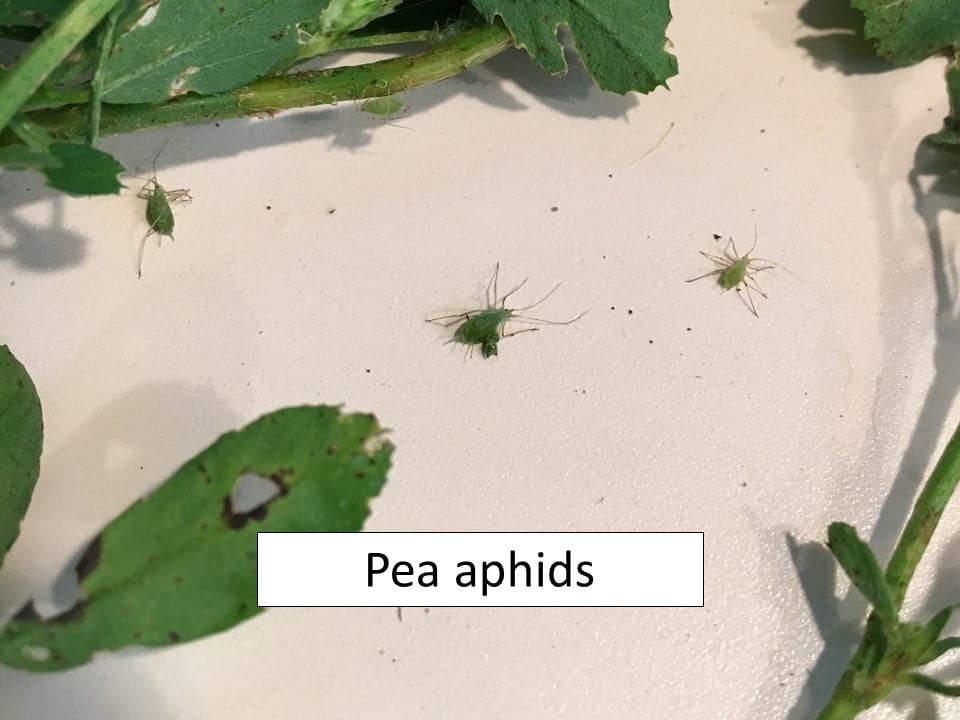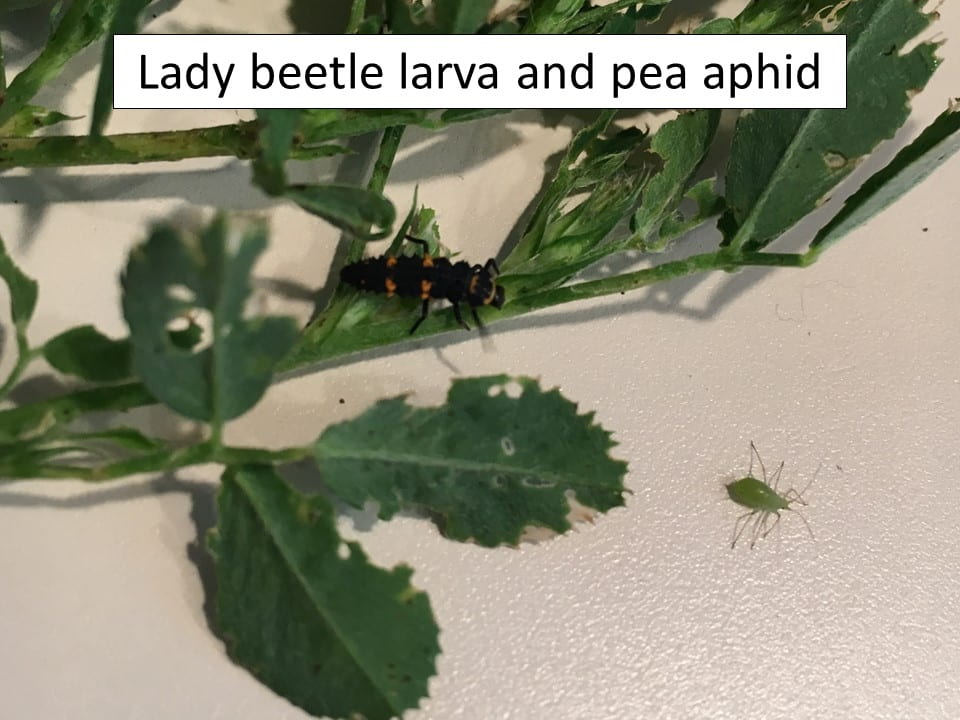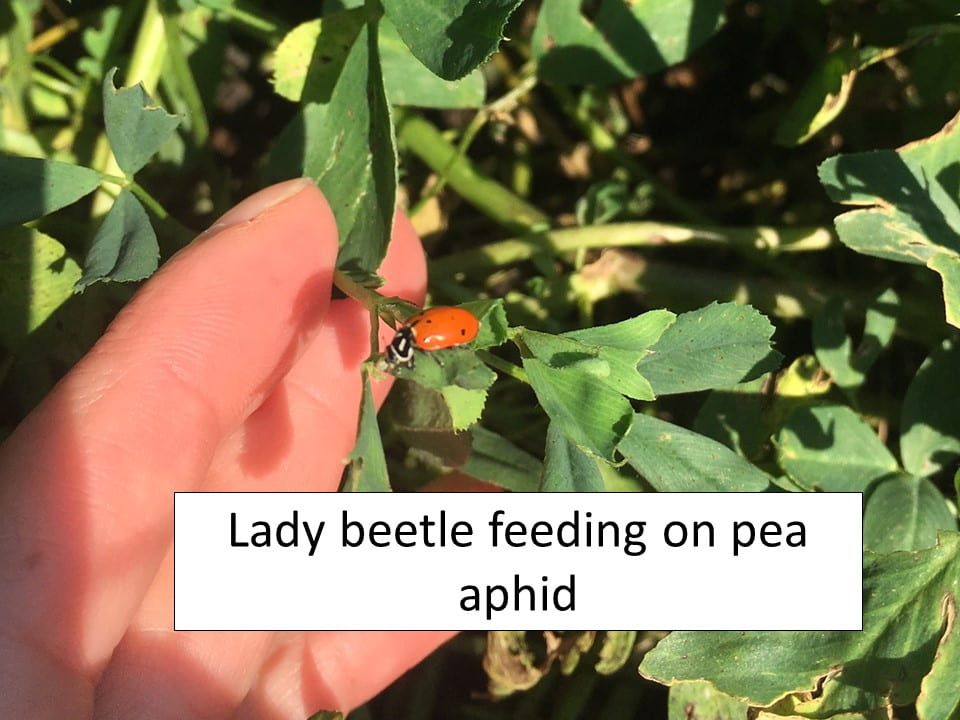–by Dr. Jeff Whitworth and Dr.Holly Davis
Seems like alfalfa weevils have caused concern for considerably longer this spring than usual as they have been active since early April, at least in north central Kansas. While there are very few larvae or pupae left, there are adults remaining in fields which is unusual for this late in the year, but not unique. Adult alfalfa weevils typically remain in the alfalfa canopy until the 1st cutting. After swathing, the adults migrate to other areas that provide more shade where they spend the summer. However, in years when there is a relatively cool spring accompanied by cloudy, rainy weather that delays getting into the fields to harvest, the canopy provides more shelter than when it is swathed in a timely manner. This results in adult weevils hanging around in the alfalfa fields later into the spring than usual because of the cooler conditions within this canopy. Adult alfalfa weevils are not the voracious leaf defoliators that the larvae are. However, they will feed a little on leaf tissue, but more frequently around the exterior of stems. This is called “barking” and normally does not stress plants under good growing conditions.
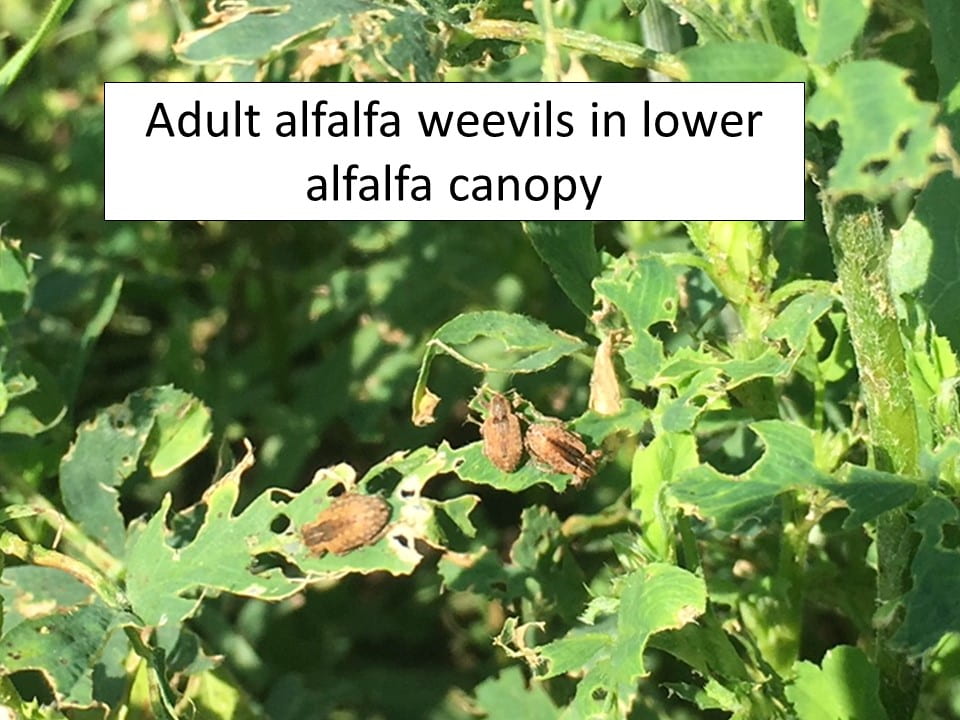
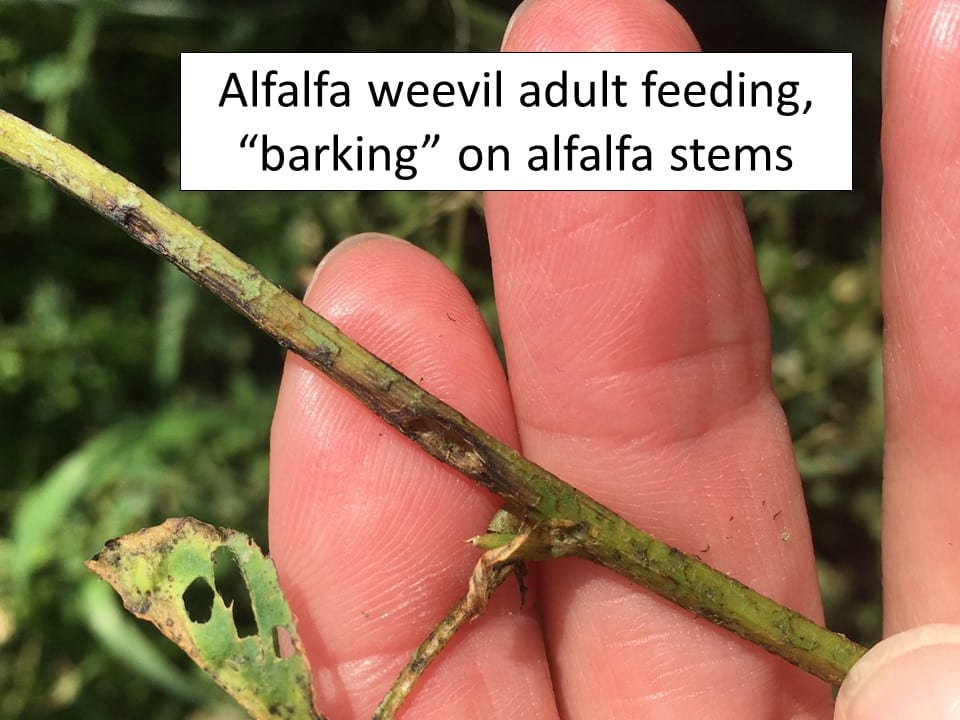
One problem with swathing while adults are still active in fields is that when the alfalfa is swathed and then windrowed, it does not kill the weevils, but does concentrate them into smaller areas. They seem content to remain in the shade provided by these windrows where they may feed on the freshly cut stems, retarding their regrowth. Often, this adds to the characteristic “striping” in these fields, especially if the windrows cannot be picked up as soon as usual. There is no management remedy for this situation, other than drier weather.


